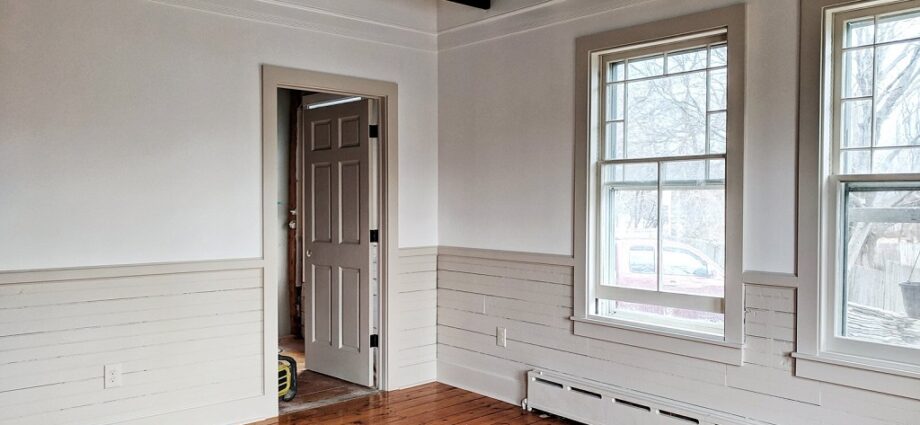A broken window can be a real headache. It compromises your home’s security, energy efficiency, and curb appeal. But before you call in a professional, consider tackling the repair yourself! With the right tools, materials, and a little know-how, you can transform yourself into a window warrior and patch up that broken pane like a pro.
Safety First: Assessing the Damage and Preparing for Repairs
Before diving into repairs, prioritize safety:
- Secure the Area: Clear away any broken glass shards to avoid injury. Use gloves and safety glasses for protection while handling broken pieces.
- Assess the Damage: Determine the extent of the breakage. Is it a small crack, a large hole, or a single pane that needs replacing?
- Gather Your Tools: You’ll likely need a putty knife, hammer, screwdriver, glazier points (triangular wedges that hold the glass in place), replacement glass (cut to the exact size of the opening), glazing compound (a putty-like material that seals the glass), and a glass cutter (if cutting your glass).
Choosing the Right Repair Method: Replacement or Patching?
The repair method depends on the severity of the damage:
- Small Cracks: Small cracks can sometimes be repaired with clear nail polish or special crack-filling products designed for glass. However, this is a temporary fix and may not be aesthetically pleasing.
- Large Cracks or Holes: For larger cracks or holes, replacing the entire pane is the recommended approach. This ensures a more durable and aesthetically pleasing repair.
Replacing a Broken Window Pane: A Step-by-Step Guide
Here’s a step-by-step guide to replacing a broken window pane:
- Remove the Existing Glazing: Using a putty knife, carefully remove the old glazing compound that holds the broken pane in place. Work slowly and steadily to avoid damaging the window frame.
- Extract the Broken Glass: Once the glazing compound is removed, carefully remove the broken glass shards. Wear gloves and dispose of the glass pieces safely.
- Clean the Frame: Clean the window frame thoroughly to remove any debris or leftover glazing compound. This ensures a good seal for the new glass.
- Prepare the Replacement Glass (if cutting yourself): If you’re cutting your glass, use a glass cutter to score the glass to the desired size. Then, carefully snap the glass along the scored line. Wear gloves and safety glasses for protection.
- Apply Glazing Points: Apply glazing points around the perimeter of the window frame, leaving a small space between the points and the frame for the glass.
- Set the Replacement Glass: Carefully position the replacement glass onto the glazing points. Ensure it sits evenly within the frame.
- Apply New Glazing Compound: Using a putty knife, apply a smooth bead of glazing compound around the perimeter of the glass, covering the gap between the glass and the glazing points.
- Smoothing and Finishing: Smooth the glazing compound with a wet putty knife to create a clean and even finish. Allow the glazing compound to dry completely according to the manufacturer’s instructions.
- Painting (Optional): Once the glazing compound is dry, you can paint it to match the window frame for a seamless look.
Important Tips and Considerations:
- Safety Matters: Always wear safety glasses and gloves when handling broken glass and tools.
- Matching Glass Thickness: Ensure the replacement glass has the same thickness as the original pane.
- Double-Paned Windows: If your window is double-paned (two panes of glass with an air gap in between), replacing the entire unit might be necessary. Consult a professional for this type of repair.
- Weather Considerations: Avoid repairing windows during extreme weather conditions like rain or high winds.
- When in Doubt, Consult a Professional: If you’re unsure about any step of the process, or if the damage is extensive, it’s always best to consult a professional window repair contractor.

Beyond Replacement: Temporary Fixes and Preventative Measures
While replacement is ideal, here are some temporary solutions for small cracks:
- Clear Tape: For a very small crack, apply clear packing tape to the damaged area to hold the glass shards together temporarily. However, this is not a long-term solution and should be addressed as soon as possible.
Preventative Measures: Protecting Your Windows
Here are some tips to prevent future window damage:
- Regular Inspections: Inspect your windows regularly for any cracks, chips, or loose glazing.
- Window Treatments: Consider installing curtains, blinds, or shutters to protect your windows from harsh weather elements like hail or strong winds.
- Trim Branches: Trim tree branches that could potentially scratch or hit your windows during windy conditions.
- Security Measures: Install security bars or window alarms to deter break-ins and potential damage.
Related: Stop The Drip: A Guide To Fixing Your Leaky Bathtub Faucet
The Takeaway: Empowered Window Warriors
With a little preparation and the right approach, you can tackle a broken window repair yourself and transform into a window warrior! Remember, safety is paramount. Assess the damage, gather the right tools, and follow the steps outlined above. For extensive damage or double-paned windows, don’t hesitate to seek help from a professional. By taking care of your windows and addressing any issues promptly, you can ensure a comfortable, energy-efficient, and secure home environment.
Happy Window Repairing!










